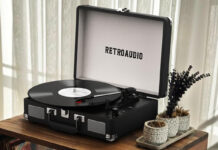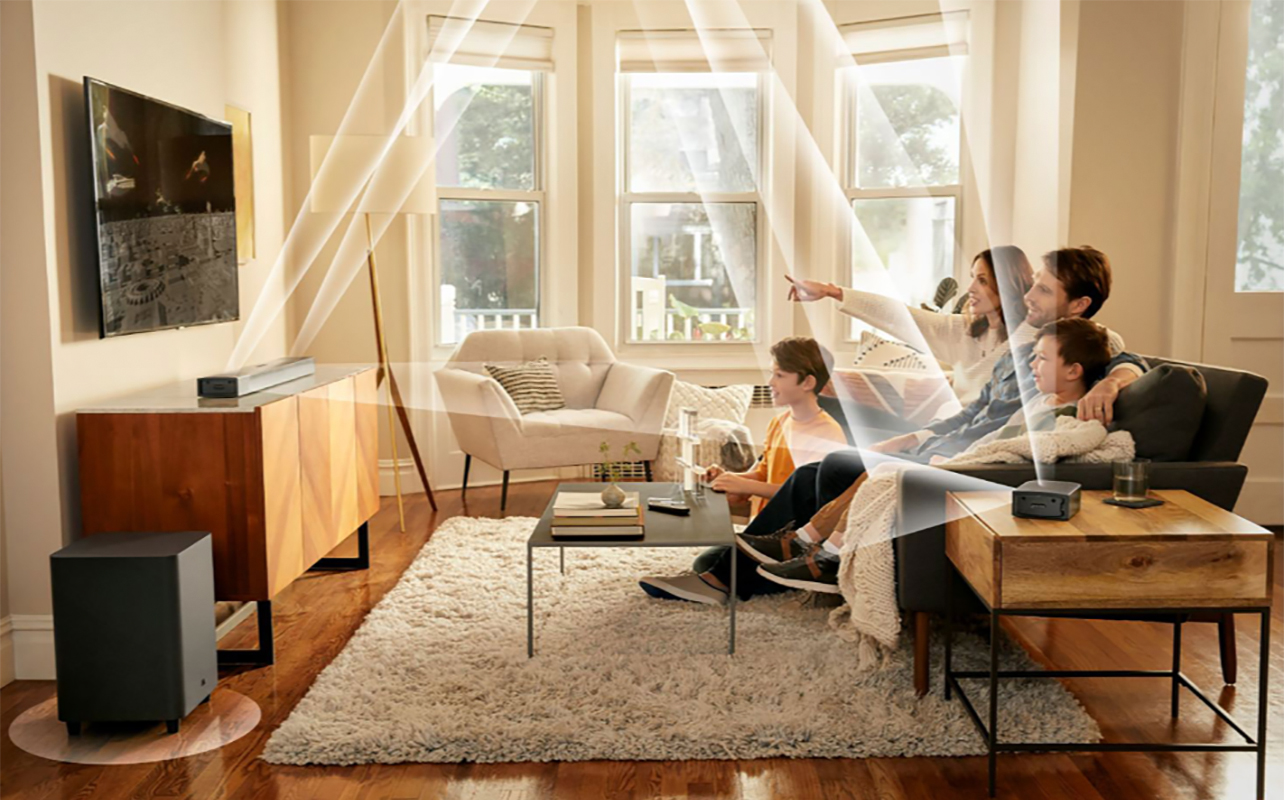
Looking for the perfect sound bar for your home theatre? Whether you’re upgrading your movie nights or levelling up your gaming setup, a sound bar can make a huge difference. In one of our articles, we explained what a sound bar is. But did you know that sound bars come in different channel configurations, like 2.0, 3.1, or 5.1.2? Each one affects how sound is delivered in your space. For example, a 2.1 channel sound bar gives you stereo sound plus a subwoofer, while a 5.1.2 setup surrounds you with immersive audio, including overhead effects for Dolby Atmos content.
In this guide, we’ll walk you through what sound bar channels mean, how they impact sound performance, and how to pick the best one for your TV and home theatre.
What do sound bar channels mean?

When it comes to sound bars, the term “channel” refers to the number of separate speaker elements built into the system. Each channel delivers sound in a different direction: left, right, centre, or even above you. The more channels you have, the more immersive and directional the sound becomes.
You’ve probably seen labels like 2.1 or 5.1.2 when browsing sound bars. These numbers tell you exactly how the audio is configured. Here’s how it works:
- First number = Number of main channels (left, right, centre, rear, side).
- Second number = Subwoofer (1 = yes, 0 = no).
- Third number = Up-firing or height speakers for Dolby Atmos.
So, a 5.1.2 sound bar has five main audio channels (front and surround), one subwoofer for bass, and two height channels to create overhead sound effects. A 7.1 system has seven channels, including sides, centre, and rear, along with a subwoofer, but no up-firing or height channels. Understanding this breakdown helps you know what kind of sound performance to expect, whether you’re aiming for simple stereo audio or full surround sound with immersive vertical effects.
Common channel configurations in sound bars
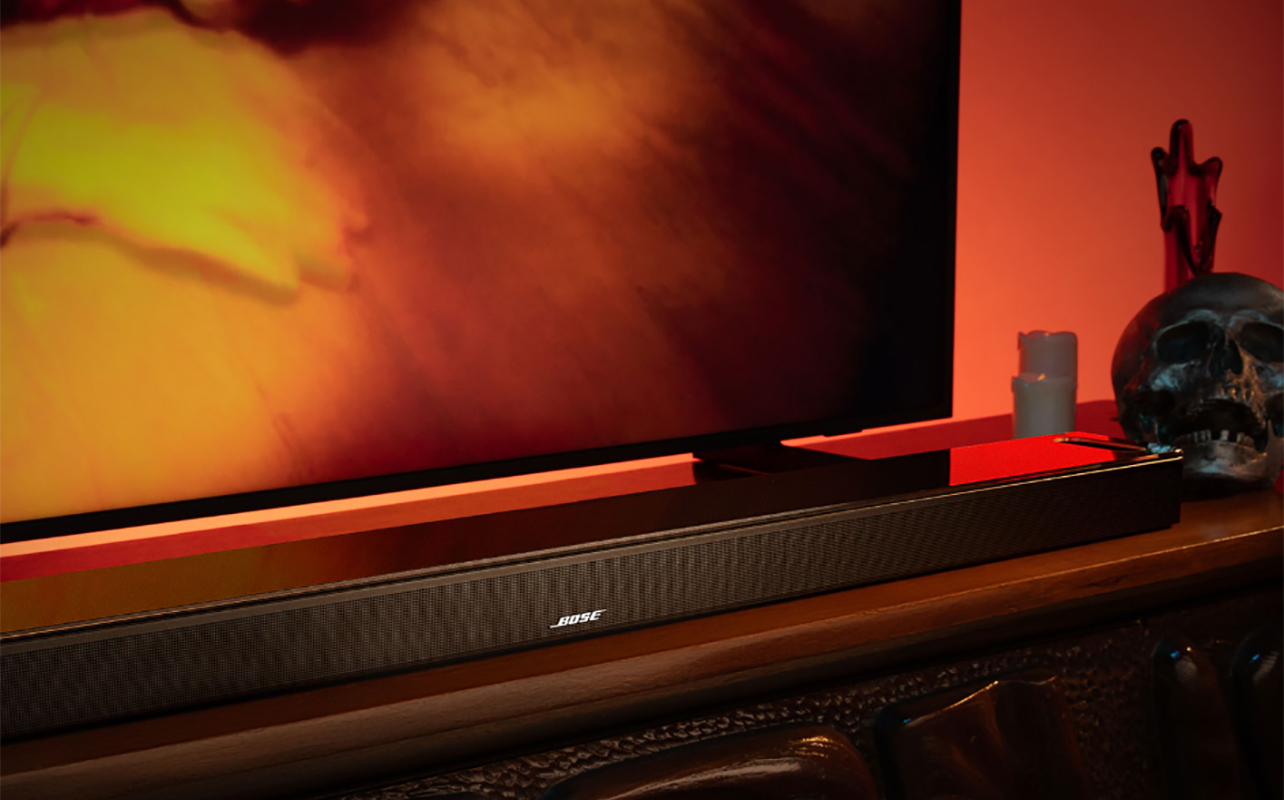
Let’s walk through the most common channel setups. Each one serves a different purpose depending on your room size, content type, and sound expectations.
2-channel sound bars
A 2-channel sound bar is the simplest kind you’ll find. It has two built-in speakers: one for the left channel and one for the right. It’s a basic stereo setup that works well in smaller rooms or for casual use like watching sitcoms, streaming YouTube, or listening to music.
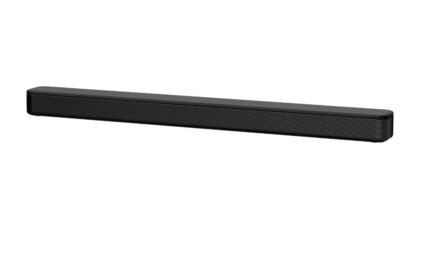
A 2-channel sound bar includes just those two speakers, with no subwoofer. You get decent stereo sound, but bass is minimal. It’s great for background viewing, low-key content, or music. On the other hand, a 2.1-channel sound bar adds a subwoofer into the mix. That means deeper bass, better impact during action scenes, and fuller sound overall. That’s perfect for movie lovers or gamers looking for a simple and affordable setup that still packs a punch.
Keep in mind, 2-channel sound bars don’t support surround sound or vertical audio. They fire sound directly from the front, which keeps setup easy and clutter-free.
3-channel sound bars
If you’re tired of turning on subtitles just to hear dialogue clearly, a 3-channel sound bar could be your new best friend. It adds a dedicated centre speaker between the left and right channels, which helps amplify voices without cranking the main volume.
A 3.1-channel sound bar includes that centre speaker and a subwoofer. The result? Balanced sound with strong bass and crystal-clear dialogue. The 3.1.2 channel sound bar takes it a step further with two up-firing speakers for Dolby Atmos. That means sound can bounce off the ceiling to give you overhead effects, adding a layer of immersion for supported content.
A 3-channel sound bar setup is ideal if you watch a lot of dialogue-heavy content like dramas, news, or interviews, and you want clarity without going full surround.
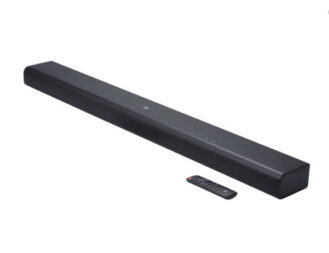
4-channel sound bars
Looking for surround sound without installing speakers all over your living room? A 4-channel sound bar, like the Denon Home Sound Bar SB550 adds rear or side-firing speakers to your front left and right ones, often delivering a simulated surround experience.
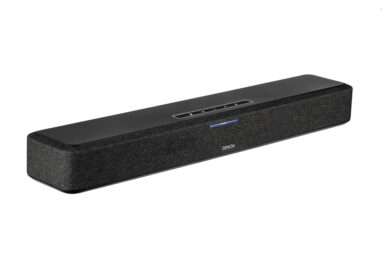
A 4.1-channel sound bar builds on this with a subwoofer for added bass. It won’t offer true Dolby Atmos or discrete surround channels, but many models use advanced audio processing to create a wraparound effect that feels like you’re in the middle of the action. It’s a smart choice for users who want a more cinematic experience without the fuss of rear speaker wiring or wall mounting.
5-channel sound bars
Wondering when you might want a 5.1-channel sound bar? The answer: pretty much all the time. It’s the go-to format for home theatre fans. A 5-channel sound bar includes five main speaker drivers: left, right, centre, and two rear (or side) surround channels. This configuration delivers real surround sound, which is ideal for action movies, sports, and immersive gaming.
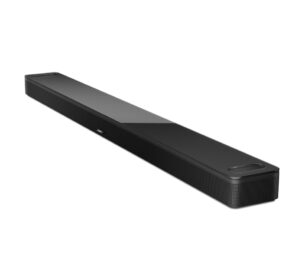
A 5.1-channel sound bar adds a subwoofer to that mix, giving you deep, rumbly bass alongside directional audio. It’s often considered the sweet spot between simplicity and cinematic performance. If you want to go a step further, a 5.1.2 sound bar adds two height channels for Dolby Atmos, creating vertical sound effects like rain falling overhead.
A standard 5-channel sound bar without a subwoofer could be fine for quieter content but might feel flat during action scenes in movies and games.
7-channel sound bars
If you have a spacious living room or open-concept setup, a 7-channel sound bar spreads the audio even more widely. It builds on the 5-channel setup by adding side surrounds, which improves the horizontal soundstage and wraps audio around your room more evenly.
A 7.1-channel sound bar includes all main channels plus a subwoofer. A 7.1.2 sound bar adds height speakers for Dolby Atmos, offering both vertical and wide surround effects. Think when you’re watching movies with planes flying. You’ll get a more realistic effect.
A 7-channel setup is ideal for big rooms, serious gamers, or anyone ready to upgrade from 5.1 and take their home theatre to the next level.
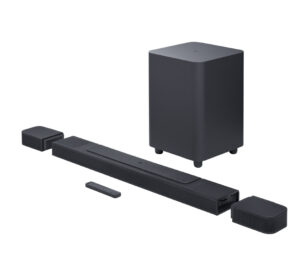
9-channel sound bars
For those chasing the ultimate audio experience, 9-channel sound bars are for you. A 9.1 sound bar includes front, centre, side, wide, and rear surround channels, plus a subwoofer. The 9.1.2 model adds two height speakers, and the 9.1.4 setup delivers four height speakers, perfect for Dolby Atmos lovers who want sound all around and above.
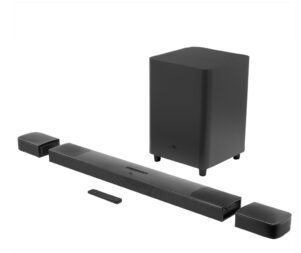
These sound bars are made for cinephiles and home theatre enthusiasts who want immersive sound without compromising their room’s layout or aesthetics. If you’re someone who wants to hear the whoosh of arrows overhead or the crack of thunder from above, with sounds all around you like you’re right there, this setup delivers next-level realism.
How to choose the right channel setup
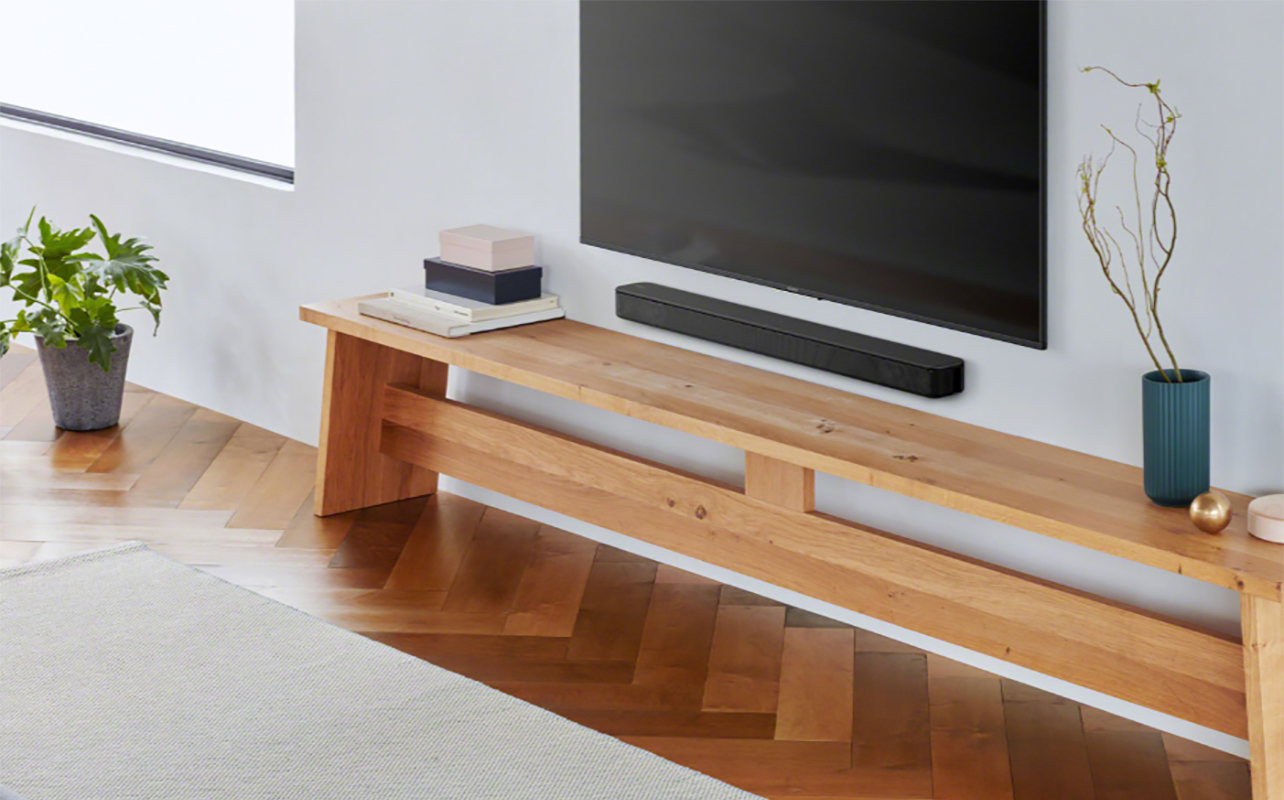
Selecting the right sound bar for your home depends on a number of factors.
- Consider your room size. If you live in a small space like a condo or bedroom, a 2.1 or 3.1 sound bar will likely give you all the clarity and bass you need. For open-concept layouts or family rooms, you’ll want at least a 5.1 or 7.1 sound bar to fill the space with sound.
- Think about what you watch (or play). If you’re a movie buff, consider going for a 5.1.2 or higher sound bar to take advantage of Dolby Atmos. Gamers should look for directional sound (like 5.1 or 7.1) so you can hear footsteps, effects, and enemy locations more precisely. For casual TV and music listening, a 2.1 or 3.1 setup may be more than enough.
- Don’t forget about future-proofing. Even if your current TV doesn’t support Dolby Atmos, newer models likely will, so opting for a 5.1.2 or 7.1.2 sound bar now could save you an upgrade later.
In addition, some sound bars offer expandability, letting you add rear speakers or a subwoofer down the line. That’s great if you want to start small but still have the option to grow your system.
Want to learn more? Read our tips on how to choose the sound bar that’s right for your home.
The right sound bar for your home theatre
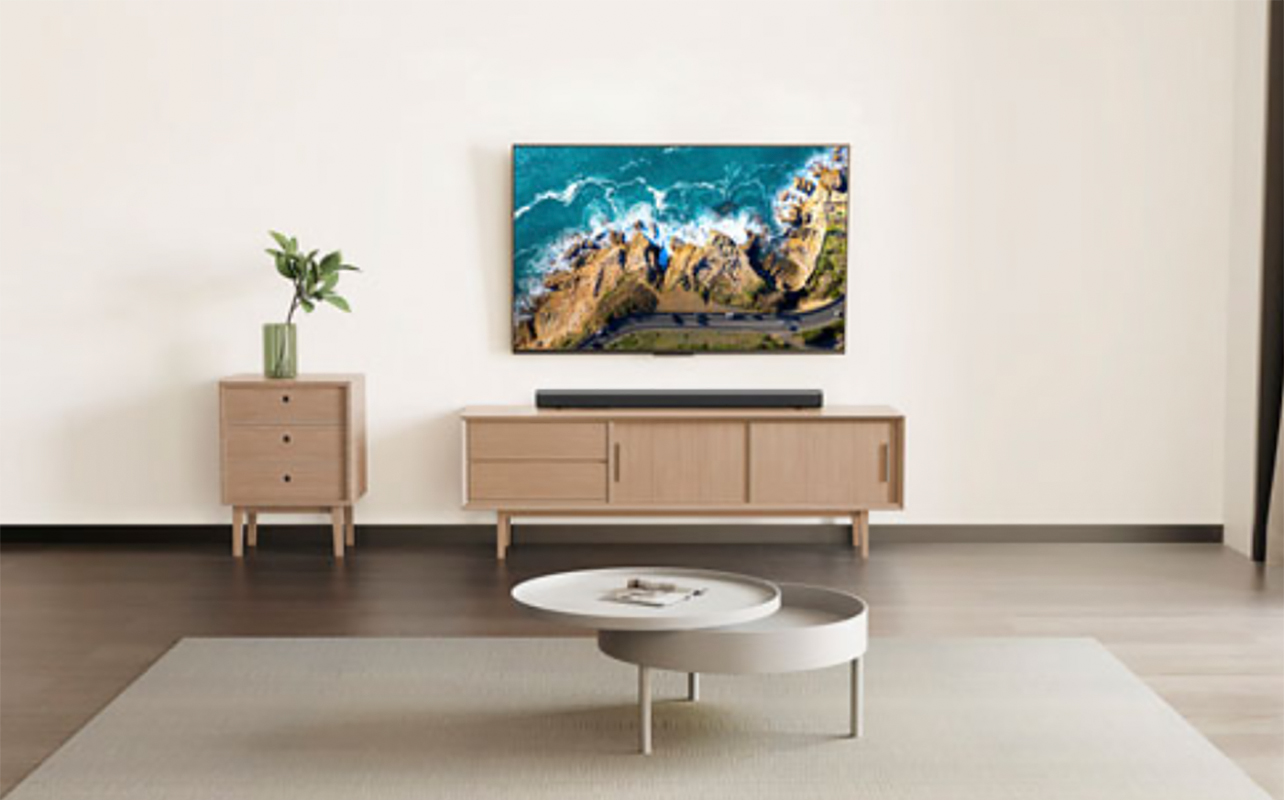
Whether you’re eyeing a budget-friendly 2.1 sound bar or dreaming of a 9.1.4 setup, the number of channels determines how immersive your sound experience will be. But don’t just chase the biggest number. Match the sound bar to your space, your habits, and your content. In the end, the best sound bar is the one that makes your favourite shows, games, and films sound amazing.
Ready to bring home better sound? Explore our wide selection of sound bars at Best Buy Canada and hear the difference yourself. Once you found the model you want, read our guide on how to connect a sound bar to your TV.
This article was drafted using AI technology and then reviewed, fact-checked, and revised by a member of our editorial team.



